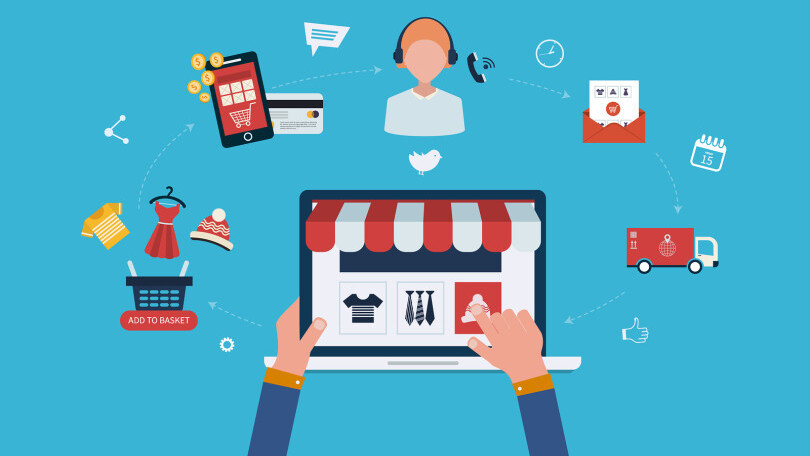
Once your company has an app, you might think you can relax and let it work its magic. However, just like every other marketing tool in your toolbox, it needs maintenance and regular updates.
By regularly adding or changing app features and functionality, you provide a better experience to users. As a developer, you have the opportunity to use these updates to solidify customer relationships, as well as attract new users. Gallup noted that people live through their phones — in fact, they often check emails and other apps anywhere from every 10 minutes to at least once an hour. That means your app needs to become one of the most frequently opened, and you can only achieve this by ensuring you regularly update your app’s features.
Here are four updates you need to consider for your app to improve the overall user experience.
1. Email Validation
It’s critical to have the most accurate email database possible regarding your users and customers. The problem is that accuracy is often overlooked. However, there are new ways to incorporate email validation tools within your app so users can provide you with updated information in a convenient way.
Email Checker is a user-friendly web-based software that also features an API to help you incorporate its functionality within your app. The result is that it creates a very simple process to log in and update an email list within various forms, such as contact forms, registration forms, or opt-in forms. The API can also be useful for any customized features within your app that need to collect an email address.
According to Andrew Blazewicz, founder of Email Checker, “A high Sender Score means the majority of your email campaign messages will reach the inboxes, whereas a low Sender Score means your messages will reach the recipients’ junk folders or, even worse, be blocked by the mailbox provider altogether.” In contrast, with the most accurate email addresses collected through your app, you’ll be able to more effectively target those users with promotions and valuable content via their email, which is something they check more frequently from their phones than from any other device.
2. Digital Personalization
App users enjoy the benefits that come with these programs, but they like it even more when an app gives them a personalized experience. Better still is when a company can deliver real-time personalization. This has the ability to increase impulse purchases and deliver an experience that results in a better brand perception from the user.
Delivering this type of digital personalization isn’t impossible, thanks to companies like Flybits. The company’s patent-protected platform lets you harness all sources of data, including proprietary, public, device sensor-driven, and real-time user behavior. By providing instant cloud access to all these sources, you can transform mobile channels from generic and static to personalized and dynamic. And technological complexity doesn’t have to bog down these intimate interactions. Because it features a user-friendly visual interface, companies can design and deliver personalized customer experiences within minutes.
Although users like the personalization, they also want to make sure they have control of their own data. As Hossein Rahnama, CEO of Flybits, explains, “We promote data transparency and a proactive approach to privacy. Our enterprise customers want to protect the privacy of their customers. That’s why we follow Privacy by Design to embed security into our software. We also use tokenization to anonymize all customer data.”
3. Security
If other stories on data breaches didn’t get your attention, surely the recent announcement from Equifax that 143 million people have now had their personal information compromised will. And the incident provides the very basis for continually monitoring and updating your app’s security. The more frequently you bolster your app with the latest security measures, the better your chance of keeping your customers’ information safe. Plus, you provide them with the confidence to continue using your app.
For example, if you’re a developer who works with Android apps, you’ll want to regularly check out Android security tips and solutions for addressing new security concerns. Developers for iOS apps can also get information on what types of security updates they need to make to maintain the highest levels of protection.
4. Bug Fixes
You most likely are already aware of your app’s bugs and know troubleshooting them is an ongoing process. However, what you may need to consider is adding some type of usability testing, like UserTesting, or a platform that focuses solely on usability analytics, such as Userlytics. Both these tools provide ways to see how the app works from users’ perspectives. After all, you’ve worked on the app so much that you might miss things. Therefore, user feedback is key to addressing all the issues you see — and may not see.
New operating systems for mobile devices can lead to issues for your app — you must test and assess to ensure the best user experience. It’s also important to test for bugs when integrating other features or partnering with other platforms.
App Update Frequency
The most successful apps receive updates one to four times a month. However, that frequency is impacted by the issues and market demands bubbling up at any particular time. Certain issues may lead to frequent app updates, while others are part of a larger app update schedule.
Those who provide insightful feedback impact your app update schedule. You may find that the data you gather also guides when and where you make updates. Of course, if you have many apps under your brand umbrella, you may not be able to update them as frequently; you have to balance your update schedule with your budget and return on investment.
While app updates are the result of hard work, not magic, they make a company app worthwhile. It’s impossible to keep users — and see the ROI you want — if you’re not making it a point to address user needs, fix bugs, and keep your app secure. Work your team’s magic on your app, and you’ll keep users engaged for the long haul.
Get the TNW newsletter
Get the most important tech news in your inbox each week.





